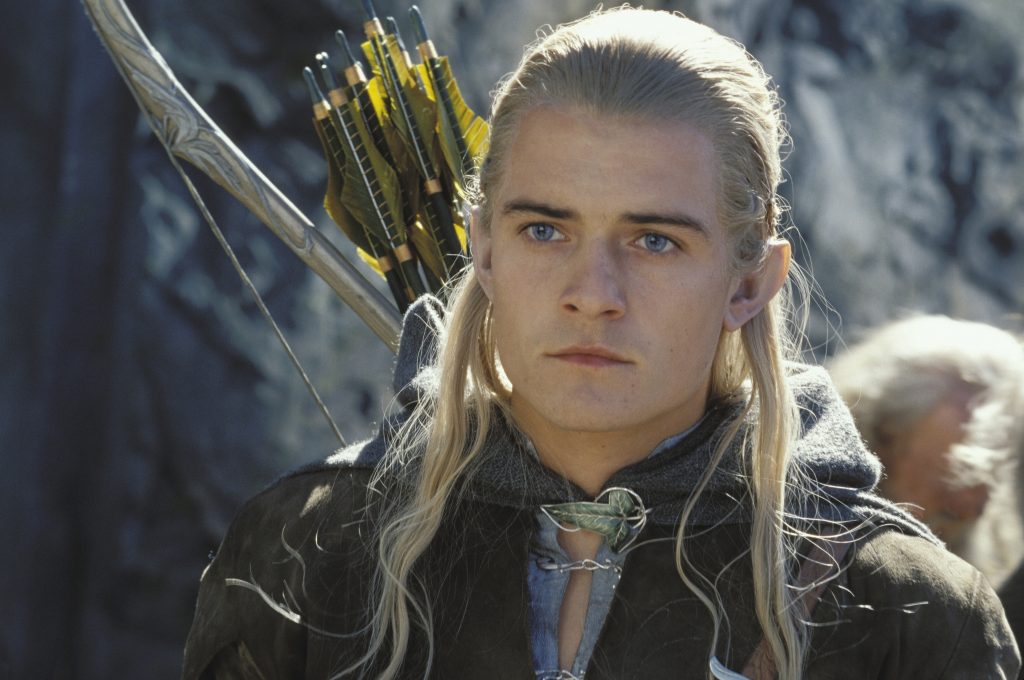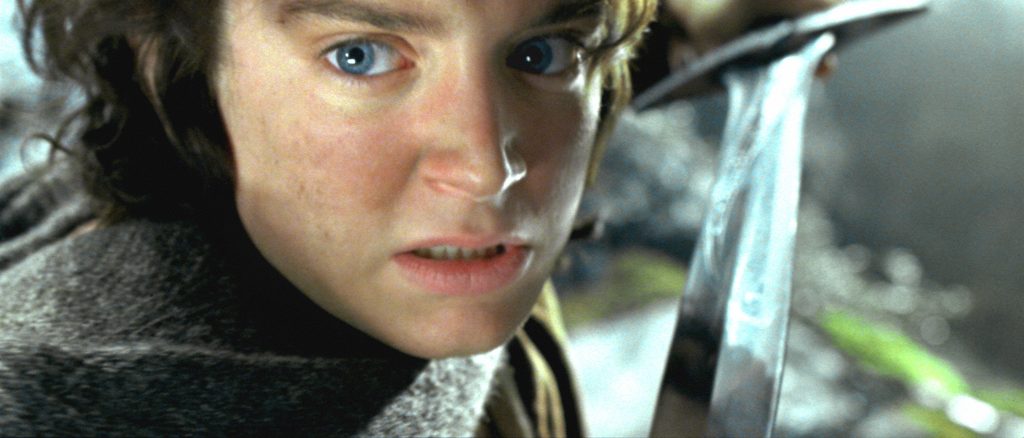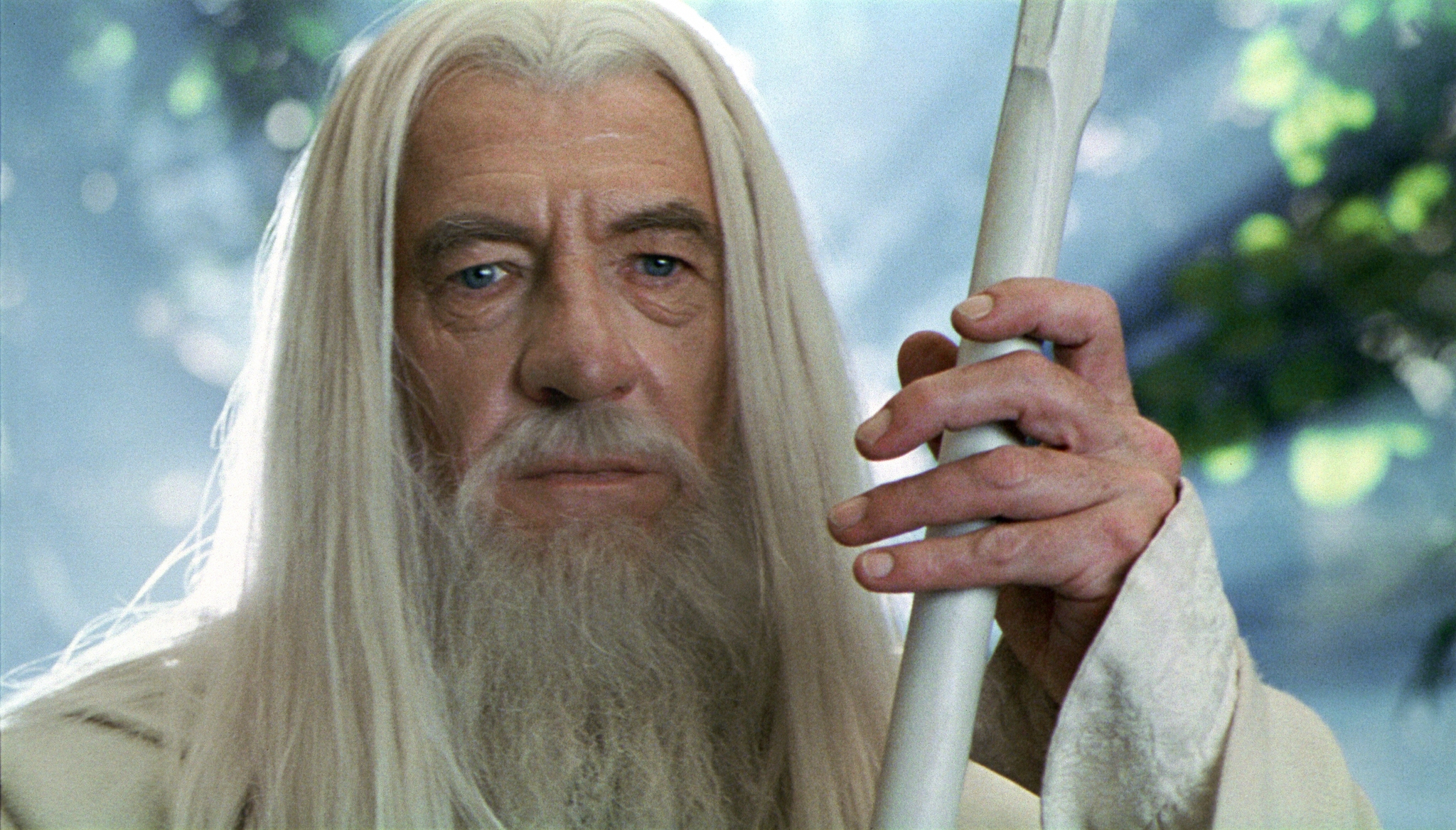Quick Summary Box
| Category | Details |
|---|---|
| Movie Name | The Lord of the Rings: The Two Towers (2002) |
| Director | Peter Jackson |
| Cast | Elijah Wood, Viggo Mortensen, Ian McKellen, Sean Astin, Andy Serkis, Orlando Bloom, John Rhys-Davies, Dominic Monaghan, Billy Boyd, Christopher Lee, Bernard Hill, Miranda Otto |
| Genre | Fantasy, Adventure, Action |
| IMDb Rating | 8.8/10 ⭐ |
| Duration | 2h 59m (Theatrical), 3h 43m (Extended) |
| Where to Watch | HBO Max, Amazon Prime (rental) |
| Release Date | December 18, 2002 |
Introduction: The Magnificent Middle Chapter of an Unprecedented Trilogy
“The Lord of the Rings: The Two Towers” stands as a masterclass in how to craft the middle entry of a trilogy. While middle chapters often struggle with pacing and purpose, Peter Jackson’s second installment in his landmark adaptation of J.R.R. Tolkien’s epic fantasy saga defies expectations by delivering a film that deepens the emotional stakes, expands the world-building, and features some of the most stunning battle sequences ever committed to film.
Following the phenomenal success of The Fellowship of the Ring, Jackson faced the daunting task of maintaining momentum while adapting what many consider Tolkien’s most structurally challenging volume. What he accomplished is nothing short of cinematic alchemy – transforming parallel storylines that never intersect in the source material into a cohesive, propulsive narrative that builds to one of the most spectacular climactic battles in film history.
Like the heartfelt journey depicted in Forrest Gump, “The Two Towers” balances intimate character moments with sweeping historical events, creating an epic that never loses sight of the personal struggles at its core. This middle chapter lays crucial groundwork for the trilogy’s conclusion in The Return of the King, while standing confidently as an extraordinary achievement in its own right.
Plot: Fractured Fellowship, Multiple Fronts
“The Two Towers” begins in the immediate aftermath of the Fellowship’s breaking, following three distinct storylines that Jackson masterfully interweaves:
Frodo (Elijah Wood) and Sam (Sean Astin) continue their perilous journey toward Mordor, soon discovering they’re being stalked by the creature Gollum (Andy Serkis), a former ringbearer corrupted by centuries of possession. After capturing him, they form an uneasy alliance with the duplicitous creature, who agrees to guide them to Mount Doom. Their journey takes them through the Dead Marshes and eventually to the secret entrance to Mordor, where Gollum’s true intentions begin to surface.
Meanwhile, Aragorn (Viggo Mortensen), Legolas (Orlando Bloom), and Gimli (John Rhys-Davies) pursue the Uruk-hai who have captured hobbits Merry (Dominic Monaghan) and Pippin (Billy Boyd). Their quest leads them to the kingdom of Rohan, a realm falling under the shadow of Saruman (Christopher Lee), whose mind-controlled King Théoden (Bernard Hill) has left his people vulnerable to attack. Here, Aragorn finds himself thrust into a leadership role as Rohan prepares for a desperate last stand at Helm’s Deep.
The captured hobbits Merry and Pippin escape into Fangorn Forest, where they encounter the ancient tree-shepherd Treebeard and his fellow Ents. As they attempt to convince these ancient beings to join the war against Saruman, the hobbits become catalysts for a conflict that will dramatically alter the balance of power in Middle-earth.
These converging narratives build toward dual climaxes: the spectacular Battle of Helm’s Deep, where a vastly outnumbered force of men faces Saruman’s Uruk-hai army, and the Ents’ assault on Isengard. Throughout, the looming threat of Sauron’s growing power in Mordor raises the stakes for all involved.
Performance Analysis: Character Depth Amid Spectacle

“The Two Towers” expands the emotional range of its characters, allowing the stellar cast to deliver performances of remarkable nuance amid the film’s breathtaking action sequences.
Andy Serkis deserves special recognition for his groundbreaking performance as Gollum/Sméagol, which forever changed how digital characters could be realized on screen. Through revolutionary motion capture technology and Serkis’s extraordinary physical and vocal commitment, Gollum emerges as one of cinema’s most complex and tragic figures. The “schizophrenic” conversation between Sméagol and Gollum – performed entirely by Serkis – remains a showcase of acting brilliance that transcends technological innovation.
Viggo Mortensen comes into his own as Aragorn, balancing vulnerability with growing leadership qualities as his character reluctantly steps toward his destiny. His scenes with Miranda Otto (as Éowyn, the shieldmaiden of Rohan who becomes infatuated with him) add emotional complexity to his heroic journey.
Bernard Hill delivers a masterful transformation as Théoden, evolving from a decrepit puppet under Saruman’s influence to a proud king willing to make a final stand for his people. His line “Where is the horse and the rider?” resonates with the film’s themes of courage in the face of overwhelming odds.
Elijah Wood and Sean Astin continue their nuanced portrayals of the hobbits bearing the greatest burden. Wood effectively conveys Frodo’s gradual corruption by the Ring, while Astin’s Sam emerges as the emotional anchor of their journey – his unwavering loyalty providing the film’s moral center.
Visual Storytelling: Revolutionary Fantasy Filmmaking
“The Two Towers” represents a quantum leap forward in visual effects and fantasy production design. The film seamlessly blends New Zealand’s breathtaking landscapes with digital enhancements and meticulously crafted practical sets to create a Middle-earth that feels authentic and lived-in.
The two major visual achievements that define the film are Gollum and the Battle of Helm’s Deep. Gollum represents the first fully realized digital character who carries significant emotional weight in a live-action film. His expressive face, believable physicality, and seamless integration with the live actors set new standards for what was possible in digital character creation.
The Battle of Helm’s Deep, occupying the film’s final forty minutes, remains one of cinema’s most impressive siege sequences. Shot over 120 nights and combining thousands of practical elements with groundbreaking digital enhancements, the battle features innovative camera techniques, stunning rain effects, and a sense of geographic clarity rare in large-scale action sequences. Peter Jackson’s decision to shoot much of the battle in “Helm’s Deep blue” – a desaturated color palette that enhances the desperation of the conflict – adds to its distinctive visual signature.
Other visual highlights include the haunting Dead Marshes with their submerged faces, the ancient grandeur of Fangorn Forest, and the Ents’ assault on Isengard – each environment distinct yet part of a coherent world. Weta Workshop’s attention to detail in armor, weapons, and creature design ensures that every element on screen feels authentic to Tolkien’s world.
Thematic Richness: Hope in Darkness
While “The Fellowship of the Ring” established the quest and its stakes, “The Two Towers” delves deeper into Tolkien’s thematic preoccupations:
The Corruption of Power: Through Gollum’s tragic history and Frodo’s growing burden, the film explores how power corrupts and warps even the purest intentions. Saruman’s fall from wisdom to industrial tyranny offers a parallel story of power’s corrosive effects.
Nature versus Industrialization: The contrast between Saruman’s smoke-belching furnaces and the ancient, natural power of the Ents provides a visual representation of Tolkien’s environmental concerns. The film presents a clear moral distinction between harmony with nature and exploitation of resources.
Hope Against Overwhelming Odds: Perhaps the film’s central theme is embodied in Sam’s powerful speech at the conclusion: “There’s some good in this world, Mr. Frodo, and it’s worth fighting for.” This sentiment runs throughout the narrative, from Helm’s Deep’s desperate defense to Frodo’s continued journey despite mounting obstacles.
The Complexity of Redemption: Through Gollum/Sméagol’s internal struggle, the film examines the possibility of redemption even for the most corrupted souls. His brief moments of genuine connection with Frodo suggest salvation might be possible, even as his darker impulses continue to surface.
Technical Mastery: Crafting a Middle-earth Symphony

Howard Shore’s score for “The Two Towers” builds upon the musical themes established in the first film while introducing new motifs for Rohan, the Ents, and Gollum. The “Rohan theme,” with its distinctive hardanger fiddle, perfectly captures the proud but threatened horse culture, while Gollum’s fragmented musical identity reflects his fractured psyche.
The film’s sound design deserves special recognition, particularly in the Battle of Helm’s Deep, where the sounds of rainfall, thousands of marching Uruk-hai, and the distinctive noise of their bladed explosives create an immersive sonic landscape. The sound team’s work on Gollum – blending Serkis’s performance with subtle enhancements – was equally groundbreaking.
Editor Michael Horton faced the monumental challenge of interweaving three disparate storylines while maintaining narrative momentum. His work ensures the film never loses its sense of urgency despite its complex structure and nearly three-hour runtime.
Cultural Impact: Reshaping Fantasy Cinema
“The Two Towers” built upon its predecessor’s success to further legitimize fantasy filmmaking as a serious artistic endeavor. Its box office performance ($936 million worldwide) and critical acclaim (including six Oscar nominations and two wins) cemented the trilogy’s status as both a commercial and artistic triumph.
The film’s technical innovations – particularly in digital character creation and large-scale battle sequences – influenced countless subsequent productions. Gollum specifically became the gold standard for performance capture, inspiring later achievements like those seen in the “Planet of the Apes” series and “Avatar.”
Beyond cinema, the film’s detailed realization of Tolkien’s world contributed to a renaissance in fantasy literature and gaming. Its impact on tourism to New Zealand, where it was filmed, created a lasting economic boost for the country and transformed how films could promote their shooting locations.
Why This Film Endures: The Perfect Middle Chapter
What makes “The Two Towers” exceptional is how it avoids the typical “middle chapter syndrome” that plagues many trilogies. Rather than feeling like a placeholder between beginning and end, it deepens the world and characters while delivering some of the trilogy’s most memorable sequences.
The film benefits from Jackson’s decision to restructure Tolkien’s narrative, interweaving storylines that remain separate in the novel to create a more cinematically satisfying experience. This adaptation choice allows for more effective pacing and clearer thematic parallels between the different character arcs.
Unlike many effects-driven blockbusters that quickly feel dated, “The Two Towers” maintains its visual power through its balanced approach to practical and digital effects. The weight and texture of the film’s environments, creatures, and battles continue to impress even as technology advances.
Most importantly, the film never loses sight of the emotional journeys at its core. For all its spectacular battle sequences and groundbreaking effects, “The Two Towers” resonates because of moments like Sam’s speech about fighting for what’s good in the world – intimate character beats that anchor the fantasy in human truth.
Conclusion: A Towering Achievement in Fantasy Cinema
“The Lord of the Rings: The Two Towers” represents the rare middle chapter that equals or even surpasses its predecessor. By expanding the emotional depth of its characters, raising the stakes of its conflict, and delivering unprecedented fantasy spectacle, Peter Jackson created not just a bridge between beginning and end, but a monumental achievement that stands proudly on its own.
For first-time viewers, the film offers a perfect balance of character development and breathtaking action. For returning fans, its layered themes and meticulous attention to detail reward multiple viewings. As the middle section of what would become one of cinema’s greatest trilogies, “The Two Towers” both honors Tolkien’s literary vision and demonstrates the unique power of film to bring fantasy worlds to vivid life.
The film builds perfectly upon the foundation laid in The Fellowship of the Ring while setting the stage for the emotional and spectacle-laden conclusion in The Return of the King. In the process, it creates a middle chapter that defies all expectations – standing tall as one of the greatest fantasy films ever made.
Did You Know?
- The Battle of Helm’s Deep took 120 nights to film in a quarry near Wellington, New Zealand
- Andy Serkis’s performance as Gollum required him to be on set twice – once performing with the actors, and again in a motion capture studio
- The digital model for Gollum contained 946 facial “shapes” to create his range of expressions
- Viggo Mortensen performed all his own stunts and actually broke two toes kicking a helmet during a take – the shot of his agonized scream was kept in the final film
- Bernard Hill (King Théoden) and Orlando Bloom (Legolas) are the only actors to appear in both this trilogy and the “Pirates of the Caribbean” franchise
Where to Watch
Available for streaming on HBO Max and for rental on Amazon Prime Video, Apple TV, and Google Play.
If You Enjoyed “The Lord of the Rings: The Two Towers,” You Might Also Like:
- The Lord of the Rings: The Fellowship of the Ring (2001) – The journey begins with this spectacular introduction to Middle-earth
- The Lord of the Rings: The Return of the King (2003) – The epic conclusion to Peter Jackson’s landmark trilogy
- Forrest Gump (1994) – Another journey film that balances intimate character moments with historical sweep
- “Gladiator” (2000) – Epic historical action with similar themes of courage against overwhelming odds
- “The Last Samurai” (2003) – Features comparable themes of cultural preservation and honor in battle

3 thoughts on “The Lord of the Rings: The Two Towers (2002): Middle-earth’s Epic Journey Reaches Thrilling Heights”